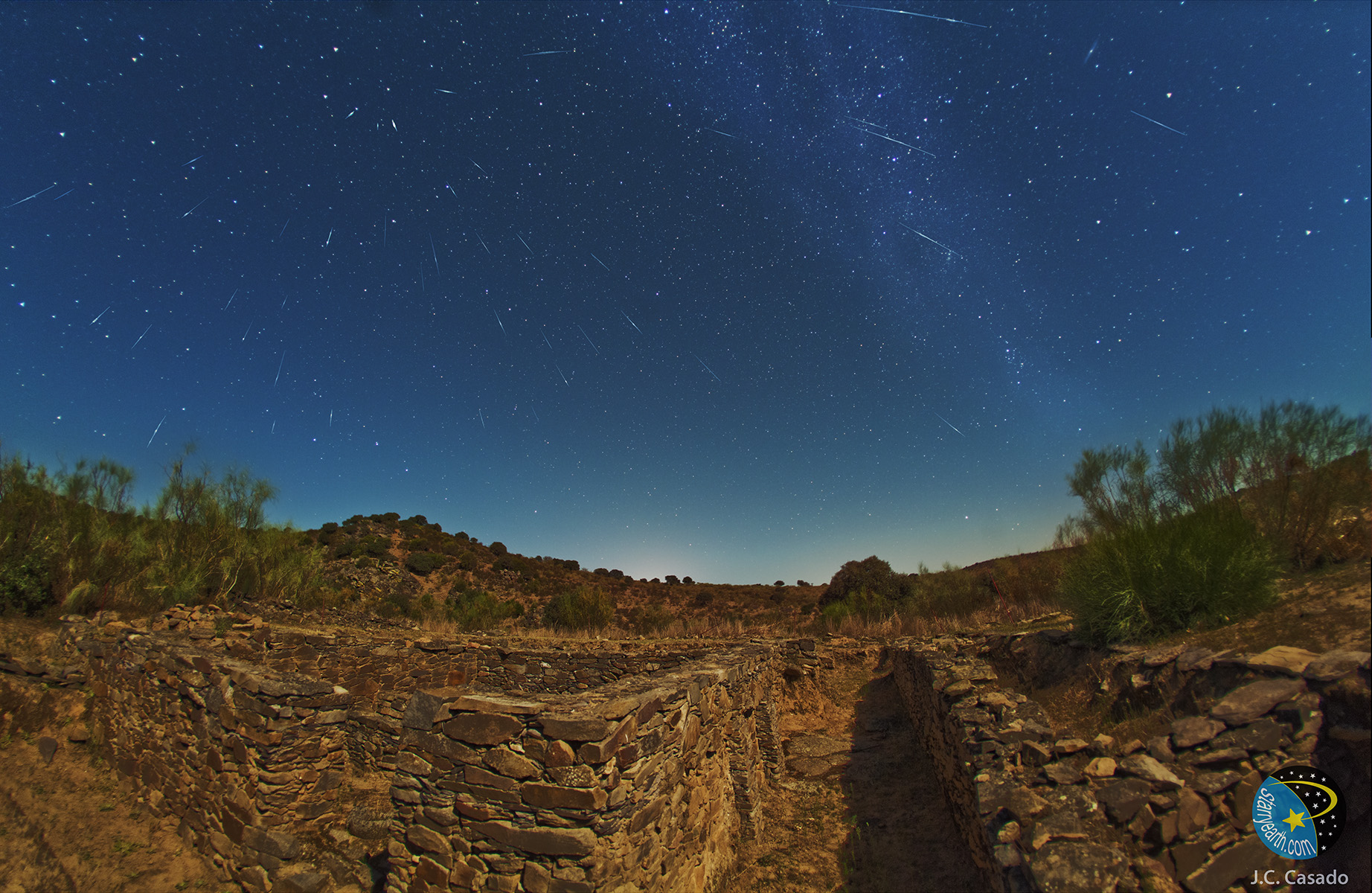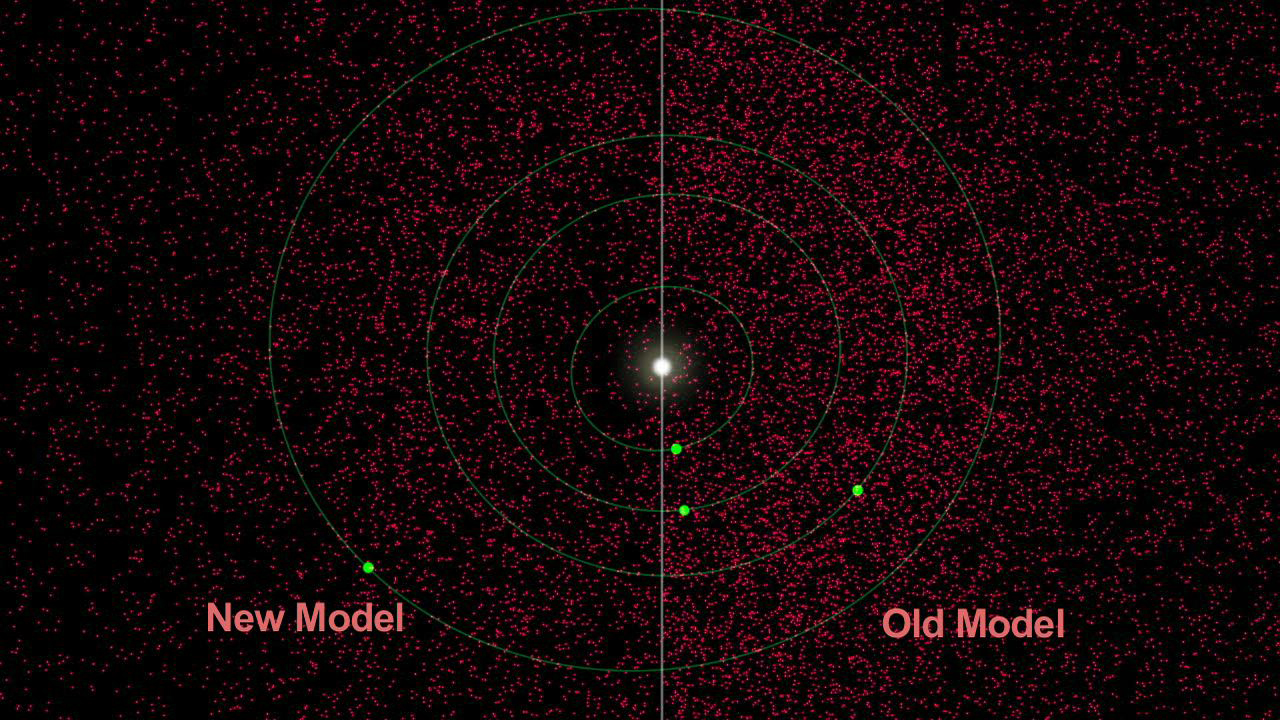Tuesday, October 25, 2011
Observation 2
This observation, on October 23, was the one at school from 8:00 to 10:00. The sky was perfectly clear to start off, with light thin clouds rolling in toward the middle but not interfering too much. This time I found Polaris, and from that Cepheus and Casseopeia. I was also able to see the constellation Sagittarius for the first time, which was admittedly pretty cool. I didn't realize the teapot would be so big either, or the square of Pegasus. The Andromeda galaxy we saw was interesting on a conceptual basis, definitely worth the look. Jupiter seemed higher on the horizon earlier as well.
Observation 1
On Saturday night, October 22, from 8:00 to 11:00 I was outside on Siesta Beach observing the stars. I was able to see Delphinus and Job's coffin, the square of Ursa Minor (but not Polaris), and Aquila and Hercules. Throughout the night it was super easy to see Jupiter trace the path from east to west across the sky. Altair in Aquila was clear and bright, but I had a hard time finding Cygnus or the Northern Cross. For some reason Delphinus was the easiest one for me to spot, and I noticed it multiple times over the course of the night as the sky darkened. I looked for Polaris, but the handle of the dipper that it is a part of was obscured by light and trees.
APOD 1.8 Draconid Meteors Over Spain
Draconid Meteors over Spain
As far as the aesthetics this image is nice, but not really noteworthy as far as rising above the other week's posts. What is interesting is the interactive portion where the constellations are connected and labelled for you when you scroll over the image with the mouse. The unusually productive amount of meteors that streamed from the constellation Draco, the dragon, produced this image. They were caused by pebble-sized chunks from the debris of the comet 21P/Giacobini-Zinner and occur in October every year. The interactive part, being the most interesting to me, is helpful when I'm trying to reference the constellations from a map and locate them in the sky. I like it because the image overlay puts the map in the sky for you, but doesn't have to connect the dots unless you choose to. It doesn't force either image into your mind to obscure the ability of locating the constellations in the night sky.
As far as the aesthetics this image is nice, but not really noteworthy as far as rising above the other week's posts. What is interesting is the interactive portion where the constellations are connected and labelled for you when you scroll over the image with the mouse. The unusually productive amount of meteors that streamed from the constellation Draco, the dragon, produced this image. They were caused by pebble-sized chunks from the debris of the comet 21P/Giacobini-Zinner and occur in October every year. The interactive part, being the most interesting to me, is helpful when I'm trying to reference the constellations from a map and locate them in the sky. I like it because the image overlay puts the map in the sky for you, but doesn't have to connect the dots unless you choose to. It doesn't force either image into your mind to obscure the ability of locating the constellations in the night sky.
Friday, October 14, 2011
al-Biruni
Al-Biruni
Abu Rayhan al-Biruni was a man noted for many things. Among works in geography, chemistry, physics, history, and mathematics al-Biruni contributed heavily to the field of astronomy. His contributions were not inventions or theories but what could be considered the much more impressive offering of knowledge. Nothing is known about his ancestry or childhood, but what is known about his life has actual dates because of al-Biruni’s constant tracking of the locations of the stars. Between his contributions to astronomy and other subjects and the applicability of the new information he discovered al-Biruni’s importance is indisputable.
Even from a young age al-Biruni showed a great aptitude for learning as well as a distinctive lean towards astronomy. Born in 973 in Khwarazm, south of the Aral Sea, he calculated the terrestrial latitude of at Kath, a nearby large city, using a graduated ring to measure the meridian solar altitude. Al-Biruni then planned on doing the same with other major cities but was interrupted when a civil war broke out. Having been taught by Abu Nasr Mansur, a prince of the Banu Iraq family, he was a highly unwanted person seeing as the civil war was intended to overthrow that exact family. In great need of a safer place to reside al-Biruni was forced into hiding and eventually fled the area. Luckily enough this worked out extremely well for him as a want to learn more worldly concepts was sparked. Al-Biruni travelled for somewhere close to seven years learning multiple languages along the way, including Arabic, Turkish, Persian, Sanskrit, Hebrew, and Syriac. This travelling allowed him to follow through on his studies of geography and history, and gave way to him writing The Chronology of Ancient Nations- one of the only books of his era to be translated into material easily referenced in history and geography today.
After these extensive travels al-Biruni returned home to Kath in 997. This year is particularly notable because on May 24 he arranged an observation of a lunar eclipse with a colleague by the name of Abu’l-Wata. In comparing notes al-Biruni was able to determine the longitudinal difference between his location in Kath and Abu’l-Wata’s location in Baghdad. Techniques such as this were favored by him as they overlapped into the differing subjects he was interested in, such as geography and mathematics. Al-Biruni’s astronomical calculations were varied, but almost all of relevance to measurement and mapping. In 1009 he had returned to Khwarazm as a man highly regarded in the Islamic world. His encyclopedic writings were well known and appreciated at the time and lent more than a slight push toward his positions later in life. Upon this return to Khwarazm such positions were taken up. Al-Biruni became the councilor and court official to successors of Ma’mun the usurper. In addition to all of this he was made the court astrologer to Mahmud, where he was content for a few years before moving on to new studies.
Throughout his life al-Biruni made a myriad of contributions to astronomy. He invented the orthographical astrolabe, to view the globe’s hemisphere as it would be seen from outer space, and wrote over a hundred and forty five books, thirty six of which were astronomy-related. Al-Biruni has been honored in many ways. To name just a few there is the crater on the moon called al-Biruni, the renaming of Khwarazm as Biruni, and stamps bearing his image. Even to this day al-Biruni retains such high regards in the astronomical world because of the value of the information that he was able to provide.
Sunday, October 9, 2011
APOD 1.6 Asteroids Near Earth
Asteroids Near Earth
So... Wait a minute. Basically what I get from this APOD is that with all of the new technology and information we have gathered recently we are actually finding less data than before? I suppose the results from NEOWISE could be seen as more precise, but what I'm seeing is that all these updated tools are finding close to 40% less near-Earth asteroids bigger than 100 meters than previously thought. So either the instruments that were used before were extremely less on target than thought, or the new instruments that are supposedly way better are just finding less asteroids. Okay... Precise is good, particularly when concerning near-Earth asteroids, but why would these results not have been challenged before and why were they taken as truth so readily? It seems as if something that detected 40% more asteroids in the past than now was way too easily taken as reliable.
So... Wait a minute. Basically what I get from this APOD is that with all of the new technology and information we have gathered recently we are actually finding less data than before? I suppose the results from NEOWISE could be seen as more precise, but what I'm seeing is that all these updated tools are finding close to 40% less near-Earth asteroids bigger than 100 meters than previously thought. So either the instruments that were used before were extremely less on target than thought, or the new instruments that are supposedly way better are just finding less asteroids. Okay... Precise is good, particularly when concerning near-Earth asteroids, but why would these results not have been challenged before and why were they taken as truth so readily? It seems as if something that detected 40% more asteroids in the past than now was way too easily taken as reliable.
Subscribe to:
Posts (Atom)

